
11 Best Online Guitar Courses Reviewed And Compared
What are the best online guitar courses? And how they can help you to learn the guitar? Read all you need to know about online guitar lessons and learning the guitar on your own.
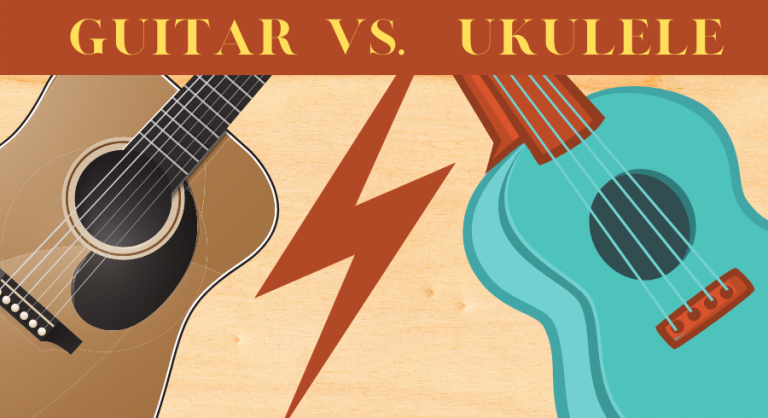
Many musical newbies can’t decide which musical instrument they want to learn to play: guitar vs ukulele? At first glance, they look similar, differing mainly in size and number of strings. But what is easier for beginners? Which instrument is better to start with? Isn’t the ukulele just for kids? If you’re already playing one or the other, you’re probably asking: Does learning the ukulele help with a guitar? Or how to move from guitar to ukulele?
These are the questions I will try to answer in this article. We will also talk about the main differences between the ukulele and the guitar, how long it takes to learn both instruments and how to find out what is better for you.
But whatever you decide in the end, you should realize that learning any musical instrument doesn’t work without self-discipline and regular practice. It can discourage many people because, despite saying that they want to learn, they are not willing to devote any time and effort to it. However, reading these lines indicates your interest in taking the first step. If you have any questions on this topic, don’t hesitate to put it in the comment section below the article.
Related article: 11 Reasons To Learn To Play The Ukulele
Well, the simple answer is YES! A ukulele is a smaller instrument and fits easier in the hand than a guitar. Unlike the guitar, it has only 4 strings and a thinner fretboard. Therefore, it is often the first musical instrument for children. The question, however, is: what does it mean to know how to play?
If we are talking about playing a chordal accompaniment to simple songs, you can do it on the ukulele in a few weeks. However, if you want to play fingerstyle and combine a melody with chords, it takes months and years.
The guitar, unlike the ukulele, is a larger instrument with a more complex sound. After all, 6 strings are more than 4, so guitarists can play fuller harmonies and have more options for solo playing and creating melodies and accompaniments.
Playing the ukulele or guitar involves not only being able to press the right strings in the right position but also strum correctly and understand music theory. The best way of learning is through systematic lessons and courses that take into account both playing techniques and theoretical knowledge.
You may learn to play the ukulele easier and faster, but that should not be the main factor in your decision! If you have a quality guitar suitable for beginners, learning the guitar can go as fast as a ukulele. The reason is that you use similar techniques: you have to learn chords and how to change them quickly. You also need to train the technique of the right hand and the rhythm (which many beginners underestimate).
With both instruments, you will learn notation and tabs. The truth is that learning the guitar and ukulele is similar, so you should simply decide based on instinct and which instrument impresses you more.
To find out which instrument is better to start with for you, you should know the basic differences:
One of the reasons why the ukulele is becoming so popular is portability. You can easily take it on a plane, on vacation, or to a friend’s meeting. The acoustic guitar has a larger body, a longer fretboard, and is heavier. When you have a hard case on it, it can be quite annoying to carry it. However, both instruments have several types and sizes:
We commonly encounter 4 types of ukuleles: soprano, concert, tenor, and baritone. The soprano is the smallest with a length of 21 inches (53 cm).
Soprano uke – 21 inches (53.3 cm)
Concert uke – 23 inches (58.4 cm)
Tenor uke – 26 inches (66.0 cm)
Baryton uke – 29 inches (73.7 cm)
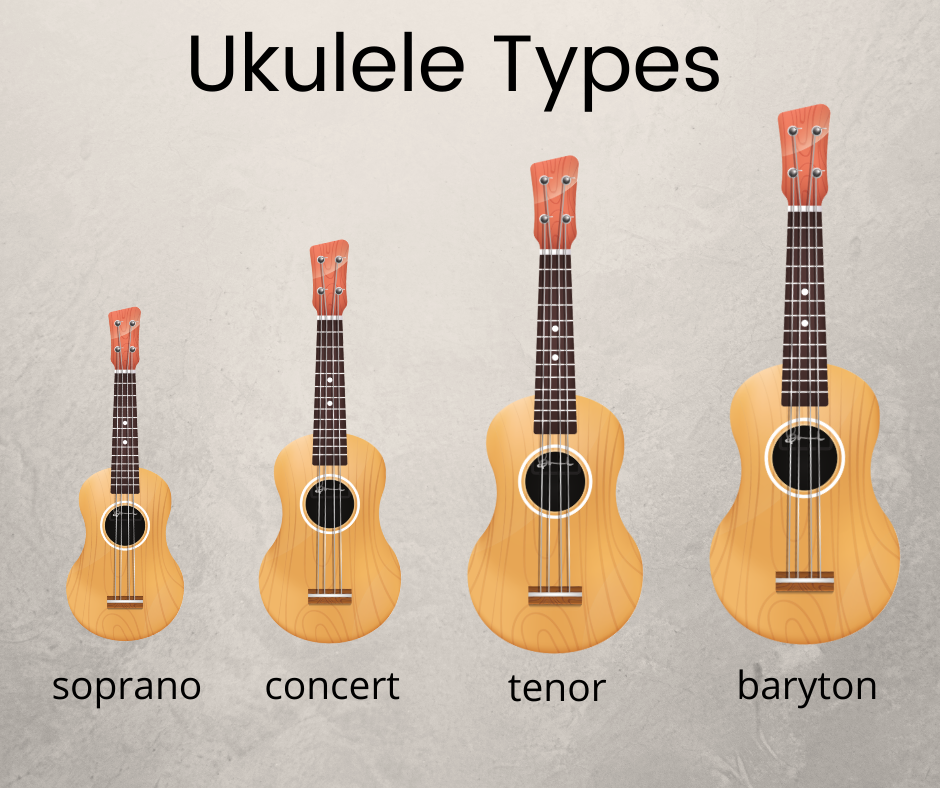
You can easily put it in your backpack or take it in your hand without having to change hands every 5 minutes. For beginners, a concert ukulele is most often recommended, which is only 2 inches (5 cm) longer than soprano ones.
In addition to the tenor and baritone ukulele, we also know the bass type, which is the largest of the ukulele family but is rarely used.
When it comes to acoustic guitars, there are many sizes and types. Classical acoustic guitars with nylon strings normally have 4 sizes (total length):
1/4 – 31 inches (78.7 cm)
1/2 – 34 inches (86.4 cm)
3/4 – 36 inches (91.5 cm)
4/4 – 38 inches (96.5 cm)
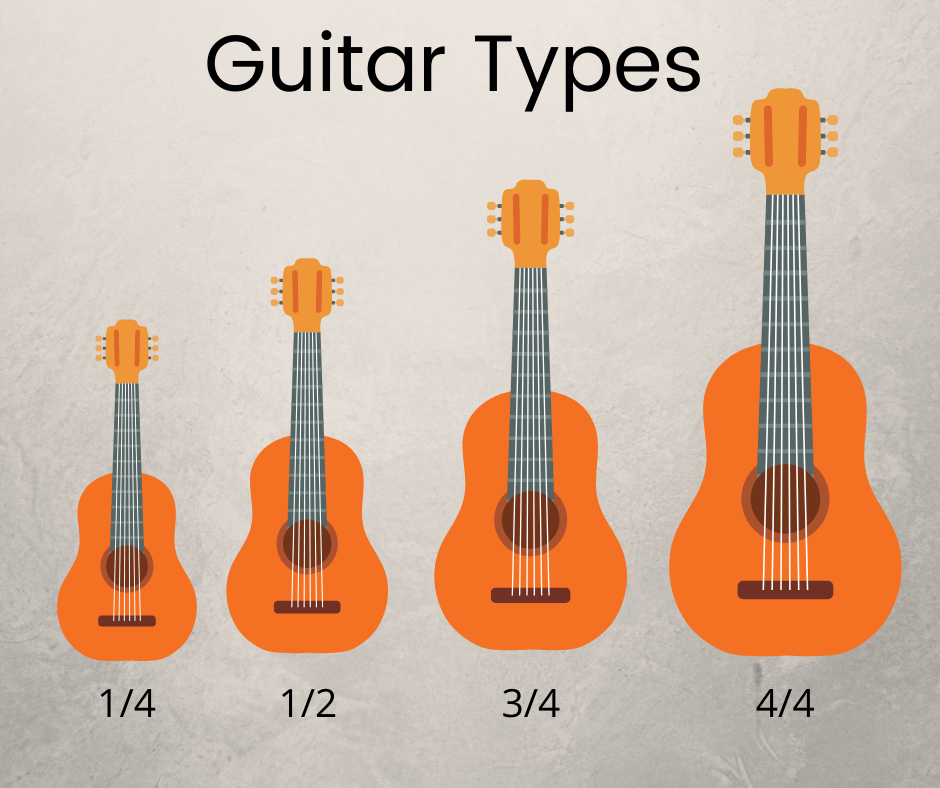
However, there are a number of types of other guitars with metal strings, semi-acoustic guitars, electric guitars, travel instruments, and guitars for children.
Choosing the right type and size of the guitar to learn depends on the age and height of the student. For children and people with smaller figures, shorter guitars with a narrower fingerboard are suitable.
Sound is, of course, an important factor when it comes to choosing an instrument. The ukulele has its own specific “Hawaiian” sound with a short reverberation. Thanks to the nylon strings, the sound of the instrument acquire softness. It is determined by the quality of the materials used and the processing. Of course, if the ukulele has a jack cable output, the resulting sound depends on the quality of the pick-ups and amplifier.
Guitars offer a really wide range of sound variety. Whether it’s classical guitars with nylon strings, different types of acoustic instruments with metal strings, or electric guitars, each type is characterized by different sound qualities. Hundreds of effects are used in electric guitars, which modulate the sound in various ways, which gives the guitarist great freedom and possibilities.
Both musical instruments are similar in construction. One hand presses the appropriate string on the fretboard, while the other strums the strings rhythmically. Whether it’s a chord accompaniment playing, soloing, fingerstyle (melody along with harmony), playing flageolets, or pulling strings, you can play all these techniques on the ukulele and guitar.
Basic ukulele chords are easier for hand position than guitar chords. However, a small ukulele fretboard can cause a little trouble for people with big hands. However, they can try baritone or bass ukuleles.
The guitar, of course, has wider options in terms of playing technique thanks to 6 strings and a longer fretboard. Each instrument also has its specifics, so what you play on an electric guitar with a distortion effect will not sound to you on an acoustic instrument.
In addition to traditional notes, tablatures are used to teach guitar and ukulele. It’s an easy way to write melodies and chords. Ukulele tabs have 4 lines representing strings. The numbers indicate the fret you have to press. If the numbers are below each other, you play the notes together. A similar system works for the guitar, with the difference that the guitar tabs have 6 lines.
Ukulele strings are tuned in the same way as the top 4 strings on a guitar. Put a capo on the 5th fret of the guitar and remove the lowest E and A strings.
You get the range of the ukulele. Therefore, the shape of ukulele chords is the same as on a guitar without the first two strings.
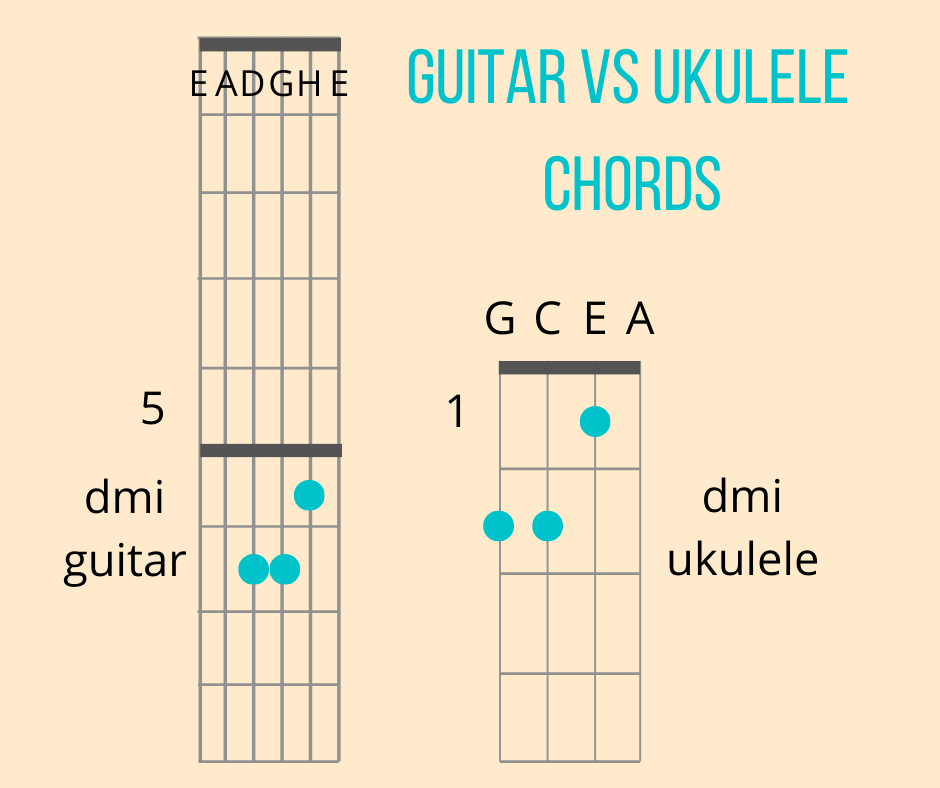
If we want to compare how much a ukulele costs for beginners and how much a guitar is, we can generally say that a ukulele is cheaper due to smaller dimensions. But it is like with other products, the quality of a musical instrument increases in price.
Although you can buy small soprano ukuleles for as little as $ 20, we recommend choosing a more expensive instrument that has a better sound and longer life. The middle price class of a concert or baritone ukulele for beginners is somewhere between $ 120-500. But get ready for around $ 1,500 for a top professional ukulele.
Acoustic guitars suitable for beginners range from $180 to $600. The choice is big, so we recommend consulting in a guitar shop or ask a teacher when choosing an instrument.
The answer is YES. Those who have mastered the guitar will learn the ukulele much faster than complete beginners. The reasons are obvious. Guitarists can transform their experiences of playing chords, rhythm, and various guitar techniques on the ukulele.
When a ukulele player wants to learn the guitar, he will also make progress faster than a newbie. It takes a while to get used to the new instrument, but with regular practice, the ukulele player gets used to the guitar very quickly.
Many music lecturers teach both guitar and ukulele, just because they learned the second instrument very smoothly.
Guitar vs. ukulele – do you already know which instrument is better to start to play? I hope this article has given you enough information to answer. Both musical instruments have their specific sound and benefits.
Beginners will especially appreciate the ukulele because of its simple design and accessibility and simplicity. The guitar, although it has 6 strings and is slightly more complicated, has many more sound options. Whatever instrument you ultimately choose, your progress will depend on your motivation, determination, and time spent practicing.
Related article: 5 Reasons Why You Should Learn A Musical Instrument Online

What are the best online guitar courses? And how they can help you to learn the guitar? Read all you need to know about online guitar lessons and learning the guitar on your own.
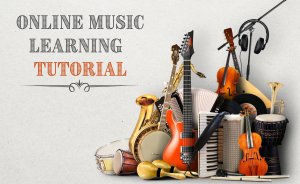
How to start to learn music online? Read our tutorial with step-by-step recommendations.